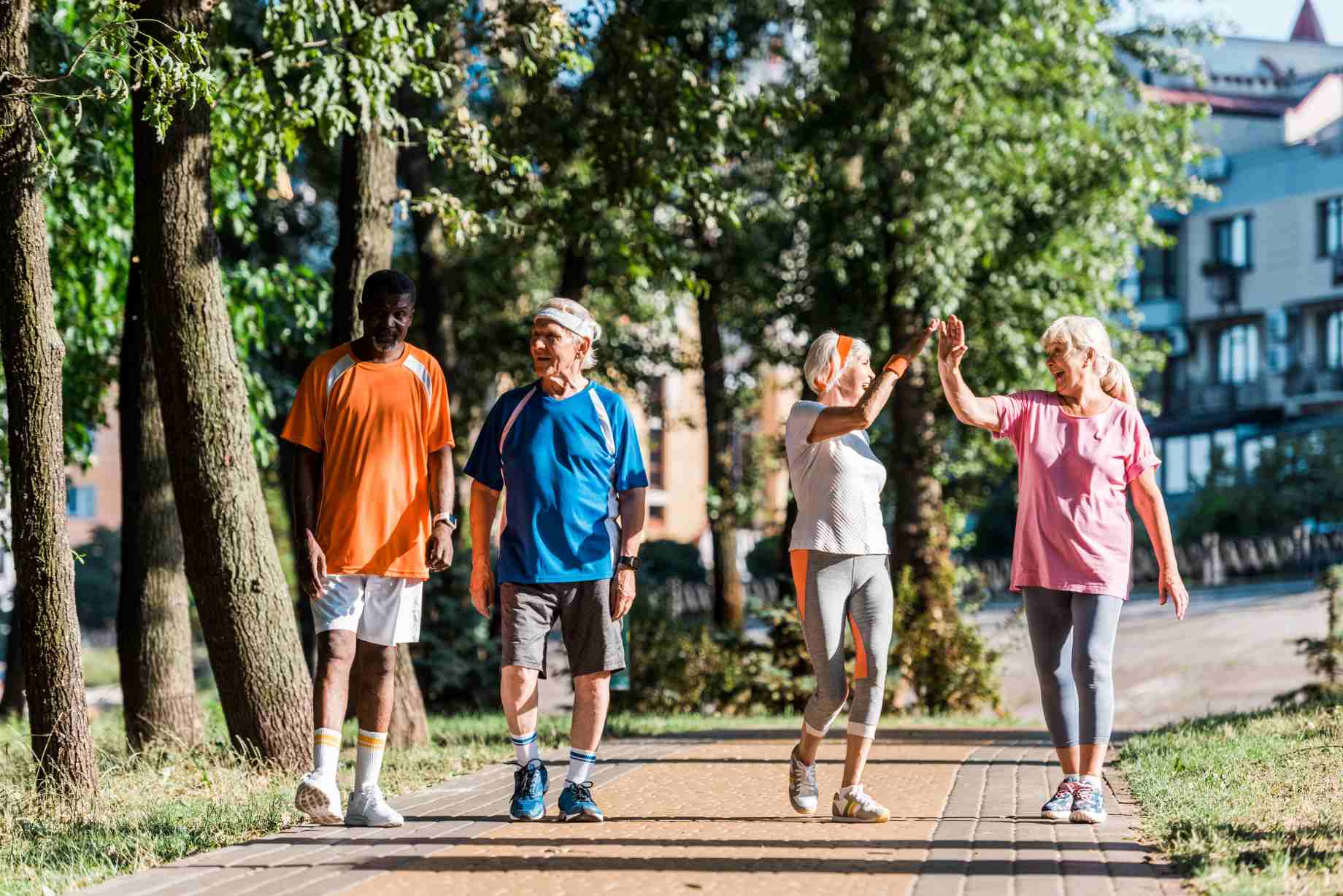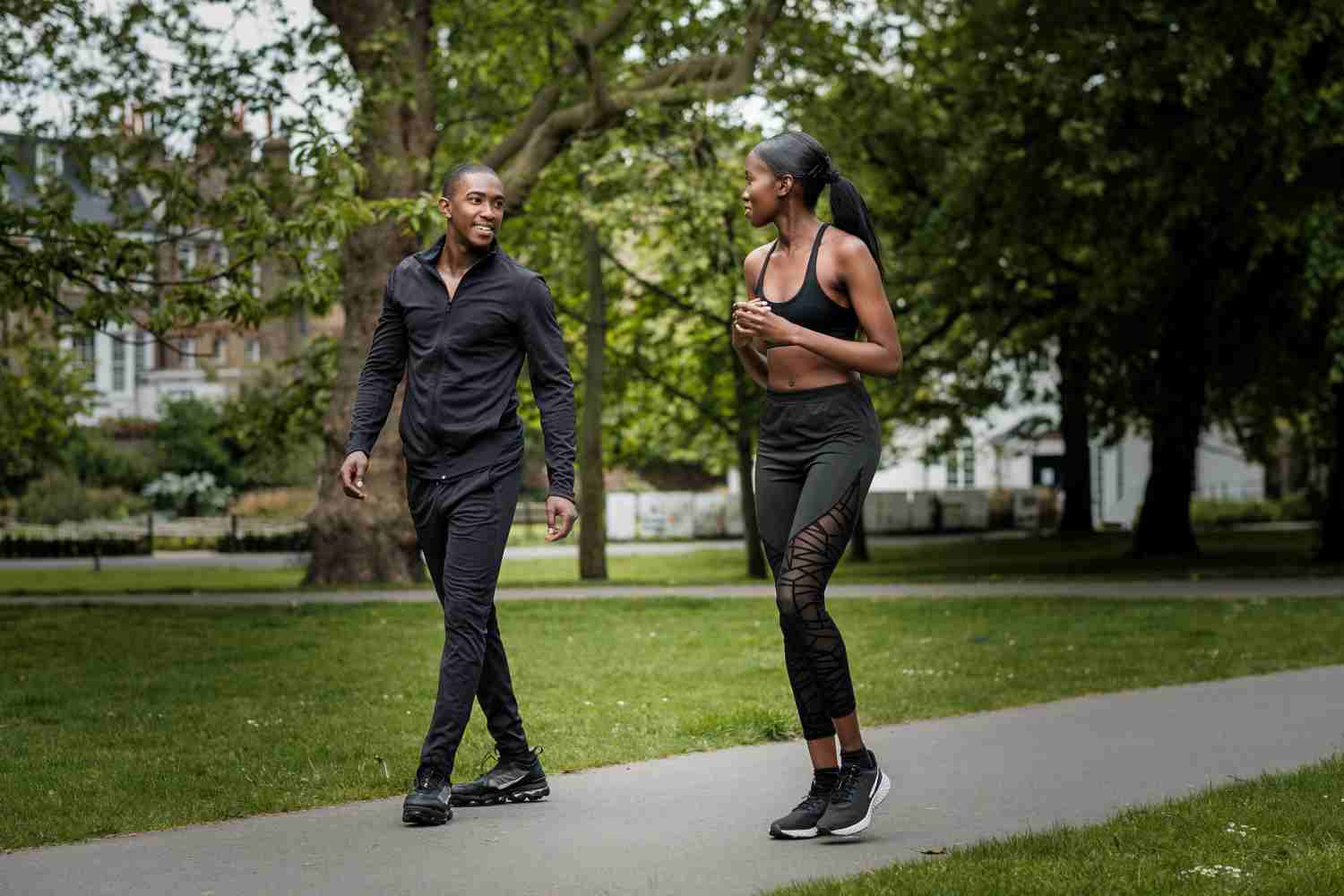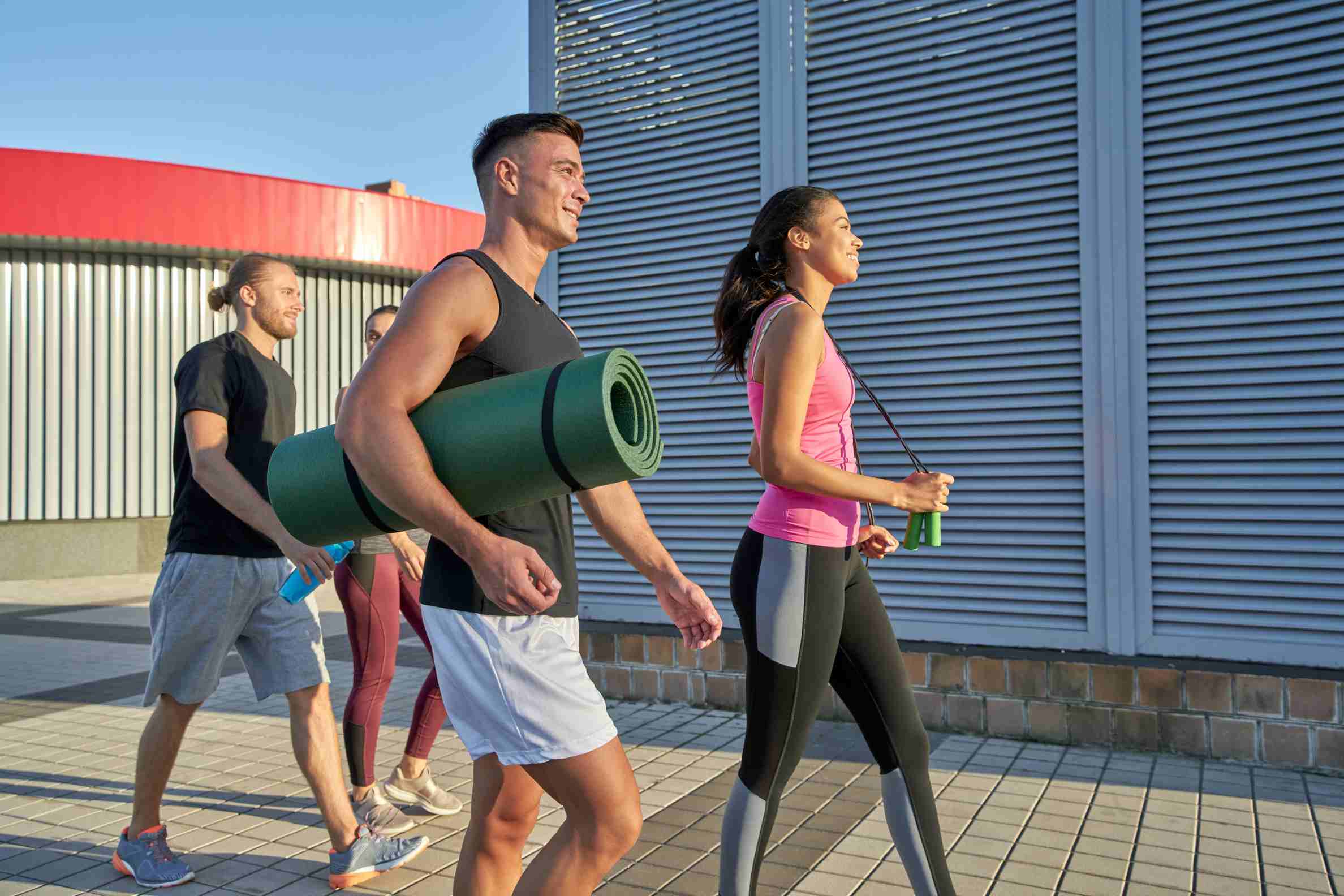Does Walking Help You Lose Weight and Reduce Belly Fat?

Walking for weight loss is a reliable fitness regime, famous for its gentle yet effective way of getting rid of extra pounds and maintaining overall health. The best walking techniques, insights into calorie burning, and strategic timing that enhances maximum effectiveness are part of what you will learn. It doesn't matter whether you are a beginner or experienced in walking; understanding such subtleties can significantly improve your weight loss journey.
Walking is a great way to lose weight, stay fit, and maintain body weight.
Hence, walking for weight loss is highly beneficial. While the weight loss may be slow, walking is the safest way of eliminating excess fat. Therefore, this guide sheds light on the ins and out of walking as an exercise and how much walk is needed for weight loss.

Table of Contents

Is Walking Good for Weight Loss?
Walking is a great way to lose weight, stay fit, and maintain body weight.
Hence, walking for weight loss is highly beneficial. While the weight loss may be slow, walking is the safest way of eliminating excess fat. Therefore, this guide sheds light on the ins and out of walking as an exercise and how much walk is needed for weight loss.
Can Walking Really Help in Weight Loss?

Walking is not the fastest way to shed pounds. Instead, it is an activity that helps to chip away at the weight slowly.
Moreover, walking also helps to maintain body weight. Therefore, it should be combined with other exercises and a proper diet for the best results.
Walking for 50-70 minutes a day, 3 days a week, helps you to lose weight. Moreover, walking for one hour can burn up to 350 calories. Hence, walking helps with weight loss.
There are several benefits of fast walking for weight loss, which we shall delve into later in this article.
What Type of Fats Can be Reduced Through Walking?
Walking focuses mainly on visceral fat, thus helping reduce overall body fat composition. Over time, it leads to a slimmer stomach by targeting the abdominal fat.
- Visceral Fat: This fat envelopes the organs within the belly cavity and is highly responsive to aerobic activities like jogging. Reducing visceral fat improves health generally since it lowers the chances of heart disease and metabolic disorders.
- Subcutaneous Fat: Positioned just beneath the skin, subcutaneous fat is targeted during sustained walking sessions. While not as harmful as visceral fat, reducing subcutaneous fat contributes to a leaner appearance and improved body composition.
- Intramuscular Fat: Found within muscle tissue, intramuscular fat is utilized as an energy source during aerobic exercises such as walking. Regular walking helps to decrease intramuscular fat, enhancing muscle efficiency and endurance.
10 Benefits of Walking for Weight Loss

There are plenty of ways how walking helps in weight loss. Take a look at some of its other benefits.
1. Walking Burns Calories
First of all, it should be reiterated that walking is not the fastest way to lose weight. However, the extended period of muscle movement and function will burn a lot of calories.
Walking is a slow and steady approach to losing and maintaining weight. Combine it with regular weight training, and the results will prove to be beneficial.
2. Walking Helps Boost Metabolism
Engaging in regular walking helps to increase metabolism. The body will eventually adjust to this new level of activity and increase its metabolic speed. Fortunately, it means your body will use less energy to perform similar activities.
In addition, an increased metabolism level helps increase the burning of passive fat and calories, ultimately increasing weight loss.
3. Walking Keeps Your Heart Healthy and Improves Weight Loss
Walking helps to boost the metabolism rate. It further helps the heart stay healthy by lowering the risk of heart attack, stroke, etc. In fact, when people are recovering from a cardiac event, they tend to put on weight. Walking is very helpful to remove this excess weight.
4. Enhances Fat Utilisation
Walking at a brisk pace encourages the body to burn fat as a primary energy source, particularly when performed consistently. This process aids in reducing overall body fat, contributing to gradual weight loss over time.
5. Improves Muscle Tone
Regular walking engages and tones various muscle groups, including the legs, glutes, and core. As muscle mass increases, the body becomes more efficient at burning calories, which supports weight loss and improves body composition.
6. Supports Mental Well-being
Walking has been shown to enhance mental health by reducing stress, anxiety, and depression. Lower stress levels can positively impact weight loss by decreasing stress-related eating and promoting a more balanced approach to food and exercise.
7. Regulates Appetite
Regular walking can help regulate hormones that control hunger and satiety. This can decrease cravings and overeating, making it easier to adhere to a balanced diet and support weight loss goals.
8. Aids Digestion
Walking after meals stimulates the digestive system, enhancing metabolism and aiding in the effective processing of food. This can prevent bloating and help the body utilise nutrients more efficiently, supporting weight management.
9. Enhances Sleep Quality
Improved sleep quality is crucial for weight management, as it affects hunger hormones and metabolism. Regular walking has been associated with better sleep patterns, which can help regulate appetite and prevent weight gain.
10. Increases Energy Expenditure Throughout the Day
Regular walking burns calories during the activity and boosts energy expenditure throughout the day. Individuals can increase their daily calorie expenditure and support long-term weight loss by integrating brisk walking into daily activities, such as taking stairs instead of lifts or walking during lunch breaks.
Body Parts Imapcted by Walking for Weight Loss
Here is the list of body parts you must know that are exercised, targeted, toned, and used while Walking:
Body Part |
Description |
| Abs | Walking engages the abdominal muscles to maintain balance and stability, especially at faster speeds. |
| Legs | Walking strengthens the entire leg, including thighs, glutes, and calves, improving muscle tone and endurance. |
| Arms | The natural arm swing during walking exercises the upper arms and shoulders, enhancing muscle tone and coordination. |
| Back Muscles | Walking helps strengthen the back muscles, which support posture and contribute to arm swings, aiding in overall stability and back health. |
| Heart Muscles | The heart pumps more vigorously during walking, enhancing cardiovascular health and increasing the efficiency of oxygen delivery to cells. |
| Thighs | Walking, particularly briskly, targets and strengthens the thigh muscles, contributing to lower body strength. |
| Glutes | Engaging in regular walking, especially uphill or on varied terrain, strengthens the glutes and improves overall lower body fitness. |
| Calves | Walking effectively tones the calves, enhancing muscle definition and supporting leg strength. |
| Upper Body | The initial steps involve arm swinging, which exercises the upper body and contributes to muscle toning in the arms and shoulders. |
| Abdominal Muscles | Abdominal muscles work intensively to stabilize the torso and maintain proper posture, particularly when walking at higher speeds or over uneven terrain. |
What Is the Best Way to Walk to Lose Weight Faster?
How much walking is needed for weight loss depends on the current weight and walking speed. Typically, you will need to walk around 4.8 kmph to see any significant results.
The faster you walk and the more weight you have, expect to burn more calories.
Now, let’s look at some questions regarding walking that can help you create a walking plan.
Normal Walk vs Brisk Walk: Which Is Better for Weight Loss?
Brisk walking is certainly better as you can lose up to 6 times more calories. Moreover, when you walk at an easy pace, you burn around 68 calories a mile. On the other hand, if you walk briskly, you will burn around 250 calories per mile almost at a run. Therefore, there are clear benefits of brisk walking for weight loss compared to natural walking.
How Many Steps Should You Walk in a Day?
To have a healthy body, you need to walk more than 10,000 steps a day. This figure stands at around 3 miles a day.
How Frequently Should You Walk While Trying to Lose Weight?
Walking for around 30 minutes a day is sufficient to improve or maintain overall health. However, to lose weight more quickly, it is recommended that you supplement walking with rigorous exercises. In addition, to lose weight, it is suggested that you burn more calories than you consume.
When Should You Walk in a Day to Lose Weight?
Most weight loss enthusiasts have several questions about the right time for walking. For example, is morning walk for weight loss better, or is walking after dinner for weight loss better? Decide for yourself!
- Morning Walk: A morning walk is good for weight loss as research shows that around 6 PM is the best time to go walking. Additionally, studies on the subject are conducted after analysing lung function, body rhythms, and temperature levels. That said, there are various benefits of walking at different times of the day.
- Evening Walk: Walking in the evening is reportedly better for people as their muscles are supple and warmed up. Moreover, evening exercise helps to stop nighttime snacking and binging.
- Walking After Having a Meal: Walking after a meal can help reduce glucose levels. Therefore, it is very beneficial for people with diabetes who are trying to lose weight.
How Many Calories Are Burned in Walking?
On average, a person weighing around 70 kilograms burns approximately 240 calories per hour when walking at a moderate pace of 5 kilometres per hour (kph). Increasing the pace to a brisk 6.5 kph can elevate calorie expenditure to about 300 calories per hour.
For those weighing 90 kilograms, the calorie burn increases to around 300 calories per hour at a moderate pace and up to 380 calories per hour at a brisk pace of 6.5 kph. To optimise calorie burn, it's recommended to incorporate walking into daily routines and adjust intensity levels according to fitness goals.
Things to Avoid During Walking to Lose Weight Faster
Avoiding certain common pitfalls can enhance the effectiveness of walking for weight loss. You can optimise your walking routine and achieve faster results by addressing these issues. Here are key aspects to watch out for:
Walking at the Same Pace
When walking for weight loss, vary the pace of your walking. Walking at the same pace does not help you to lose weight fast. But intermittent periods of brisk walking with natural walking can aid in weight loss.
Not Setting a Target
When you walk, try to set a self-imposed target. It will help you to be accountable to yourself. Set yourself weekly and yearly goals and try to achieve them.
Not Eating a Complementary Diet
Physical activity is complemented with a low-fat, nutrient–intense diet. Only then is walking beneficial and corresponds to weight loss.
Techniques for Effective Walking Exercise

Discover the essential techniques that enhance the benefits of walking, from posture to stride. Mastering these fundamentals ensures your walking sessions are both effective and enjoyable.
- Maintain Proper Posture: Keep your body upright, your shoulders relaxed, and your chin parallel to the ground to prevent strain on the neck and back.
- Optimize Arm Swing: Ensure natural arm movements with elbows bent at a 90-degree angle to enhance balance and momentum.
- Foot Placement and Stride: Land softly on your heels, roll through to the toes, and maintain a steady stride length for efficient walking.
- Increase Intensity with Pace: Take shorter, quicker steps to intensify your workout, boosting calorie burn and cardiovascular benefits.
- Engage Core Muscles: Tighten your abdominal muscles and keep your back straight to support posture and improve overall stability.
How to Add Walking to Your Workout Program?

Learn how to integrate walking into your workout routine to boost fitness and support weight loss goals. These practical tips will help you maximize the benefits of walking as part of a balanced exercise regimen.
- Start Gradually and Increase: Begin with short walks and gradually extend the duration or distance as stamina improves.
- Incorporate Brisk Walking Intervals: Alternate between regular and brisk walking segments to elevate heart rate and enhance aerobic capacity.
- Use as Warm-Up or Cool-Down: Begin or end other workout sessions with a brisk walk to warm up muscles or aid recovery.
- Explore Varied Terrain: Walk on different surfaces like hills or trails to challenge muscles and improve overall strength and endurance.
- Track and Monitor Progress: Record distance covered, pace, and calories burned to monitor improvements and set realistic goals.
- Combine with Other Exercises: Integrate walking with strength training exercises to achieve a balanced fitness routine that targets different muscle groups.
In conclusion, walking for weight loss is good if other exercises and diets are properly maintained. Hence, walking alone is not enough for quick weight loss. Moreover, walking is viewed as a way to maintain weight rather than lose it. However, it is not to say that walking is not beneficial. On the contrary, it is beneficial up to a degree.
Important Health Insurance Plans for Every Stage of Life














